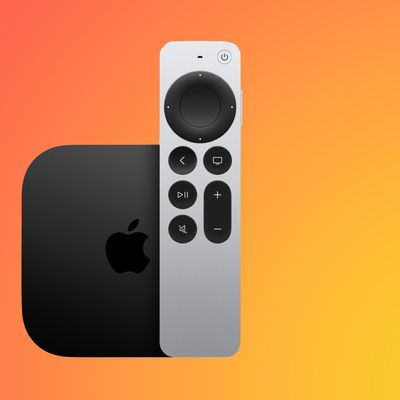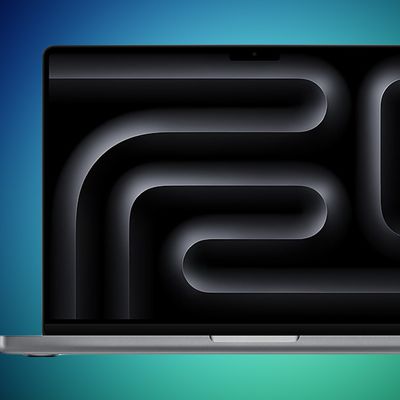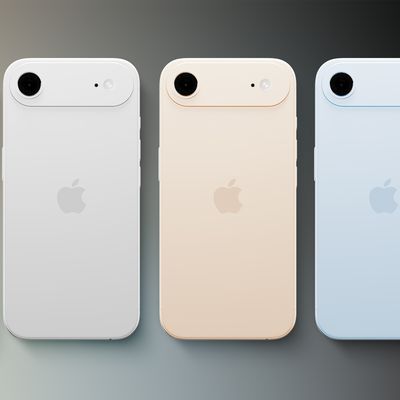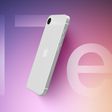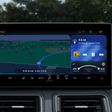Digital Audio Veteran Peter Eastty Joins Apple as Director of SoC Audio Processing
Audio expert Peter Eastty of Oxford Digital Limited has left the company he co-founded to work for Apple. According to his LinkedIn profile, Eastty joined Apple in September of this year as the Director of SoC (System on Chip) Audio Processing.
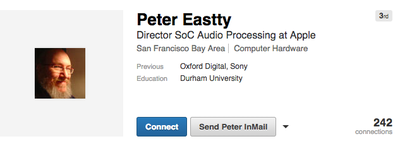
Eastty's career in digital audio spans more than 40 years, including oversight of a pioneering digital audio team at Solid State Logic, a 13-year stint at Sony as a chief consultant engineer, and more than eight years as CTO at Oxford Digital. Most of his work has focused on digital audio and digital signal processing for audio equipment.
"I’ve worked in the application of digital and computer technology to audio since I graduated from college and I still find the problems fascinating as well as the answers."
Details on Eastty's role as Director of SoC Audio Processing are unknown, but he likely is using his DSP expertise to improve the audio quality of Apple's hardware. Earlier rumors suggested Apple was working to add support for 24-bit audio files in iOS 8 and create a new 24-bit capable version of its In-Ear headphones, but those reports have not yet panned out.
Eastty is not the only audio pioneer hired by Apple in recent years. Back in 2011, Apple hired THX pioneer Tomlinson Holman to help "provide technical direction for the company in audio" as he reports on his LinkedIn profile.
(Thanks, Manu!)
Popular Stories
Apple will launch its new iPhone 17 series in two months, and the iPhone 17 Pro models are expected to get a new design for the rear casing and the camera area. But more significant changes to the lineup are not expected until next year, when the iPhone 18 models arrive.
If you're thinking of trading in your iPhone for this year's latest, consider the following features rumored to be coming...
A new Apple TV is expected to be released later this year, and a handful of new features and changes have been rumored for the device.
Below, we recap what to expect from the next Apple TV, according to rumors.
Rumors
Faster Wi-Fi Support
The next Apple TV will be equipped with Apple's own combined Wi-Fi and Bluetooth chip, according to Bloomberg's Mark Gurman. He said the chip supports ...
Apple's next-generation iPhone 17 Pro and iPhone 17 Pro Max are only two months away, and there are plenty of rumors about the devices.
Below, we recap key changes rumored for the iPhone 17 Pro models.
Latest Rumors
These rumors surfaced in June and July:A redesigned Dynamic Island: It has been rumored that all iPhone 17 models will have a redesigned Dynamic Island interface — it might ...
Apple does not plan to refresh any Macs with updated M5 chips in 2025, according to Bloomberg's Mark Gurman. Updated MacBook Air and MacBook Pro models are now planned for the first half of 2026.
Gurman previously said that Apple would debut the M5 MacBook Pro models in late 2025, but his newest report suggests that Apple is "considering" pushing them back to 2026. Apple is now said to be...
iPhone 17 Pro and iPhone 17 Pro Max models with displays made by BOE will be sold exclusively in China, according to a new report.
Last week, it emerged that Chinese display manufacturer BOE was aggressively ramping up its OLED production capacity for future iPhone models as part of a plan to recapture a major role in Apple's supply chain.
Now, tech news aggregator Jukan Choi reports...
The long wait for an Apple Watch Ultra 3 is nearly over, and a handful of new features and changes have been rumored for the device.
Below, we recap what to expect from the Apple Watch Ultra 3:Satellite connectivity for sending and receiving text messages when Wi-Fi and cellular coverage is unavailable
5G support, up from LTE on the Apple Watch Ultra 2
Likely a wide-angle OLED display that ...
In select U.S. states, residents can add their driver's license or state ID to the Wallet app on the iPhone and Apple Watch, providing a convenient and contactless way to display proof of identity or age at select airports and businesses, and in select apps.
Unfortunately, this feature continues to roll out very slowly since it was announced in 2021, with only nine U.S. states, Puerto Rico,...
The iPhone 17 and iPhone 17 Air will be available in a total of nine color options, according to new information coming out of Asia.
The iPhone 17 Air's expected color options.
According to the leaker going by the account name "yeux1122" on the Korean blog Naver, accessory manufacturers are now producing camera protector rings for the iPhone 17 and iPhone 17 Air in colors to match their...




